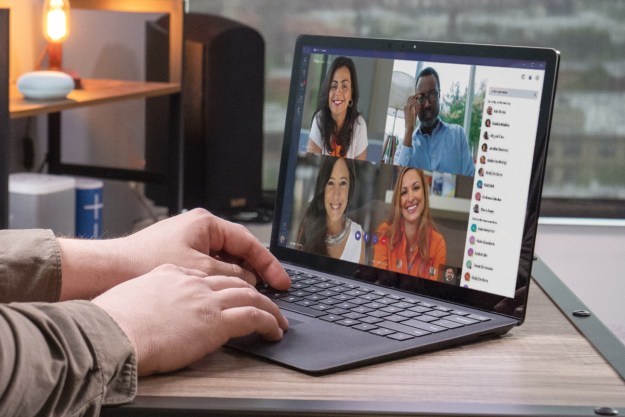
Hey, you don’t have to say that anymore when you talk to Cortana. That’s right, your days of needing a two-word wake word for Microsoft’s artificially intelligent assistant are long behind you. From now on, all you need to say is “Cortana,” and Cortana will stand (metaphorically speaking, of course) at attention. This falls in line with Amazon Alexa, which only requires users to say her name in order to be activated.
For now, the only place in which you can actually be so straightforward with Cortana is with the Cortana-powered Invoke speaker by Harman Kardon. As it stands, the revision to the Cortana wake word isn’t live yet on Cortana for iOS, Android, or Windows 10, but should soon be making its debut. Microsoft told The Verge that it made this change last week for the Invoke smart speaker, although the original “Hey Cortana” command will still get you what you need as well (obviously, since “Hey Cortana” contains the word “Cortana”).
It’s not entirely clear why Microsoft made the decision to drop “hey” from the command, though it seems pretty obvious that saying one word is easier than saying two. That said, there are certainly other smart assistants that still require more than just a name to turn on their capabilities. Apple, for example, needs you to say, “Hey, Siri,” while Google Assistant needs, “OK, Google.”
Cortana, however, seems to be ever more closely in line with Amazon Alexa. In fact, last year, Microsoft and Amazon partnered in order to integrate Alexa and Cortana so that both assistants could be used on smart speakers. While that integration was intended to be made available before the end of 2017, it obviously still hasn’t made its debut quite yet. Recently, on a Windows Insider podcast, folks from Microsoft noted that they’re currently in the process of testing this integration within the company. There remains no set date for when it will actually be released to the public.
But in the meantime, we can rejoice in the fact that it got just a little bit easier to use only our voice to control our environment.
Editors' Recommendations
- You can now try out Google’s Bard, the rival to ChatGPT
- Microsoft’s DirectStorage can now boost your game loading times by 200%
- Microsoft Teams will now translate your calls — with a catch
- Microsoft responds to hack of Cortana and Bing source code
- Hey, Bingo? Steve Ballmer nearly changed Cortana’s name in last act at Microsoft


